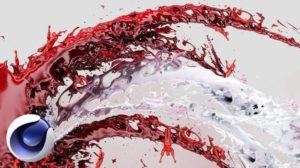

"Cell size" controls the number of particles.
#Realflow hybrido how to
In the → " Learn" section you will find a quick start tutorial about how to create a complete Hybrido scene. Effects like splashes, foam, or bubbles can be added through Hybrido secondary fluids. If you want to simulate small or mid-sized volumes of water with a high level of detail we recommend using RealFlow's → Dyverso technology. Once you start simulating with just a single splash emitter or interacting fluid sources, it's difficult and the sheer amount of data you have to transfer via your network destroys all the positive effect you get from a distributed simulation.Hybrido fluids are mainly used for mid or large-scale projects and they are based on a grid and cell technology. That's why you can only simulate secondaries (splash, foam, bubbles) via a network, but only if they don't interact - that's the principle behind IDOCs: You add several non-interacting splash emitters, for example, and this kind of simulation can be shared. Even smallest differences can have a huge impact: problems like numerical viscosity, instabilities etc. It's also difficult to synchronize the CPUs from different computers, because with simulations you have to use very precise floating point operations. Houdini, for example, had such an approach, and they called it a big mistake. With network simulations it's pretty much the same: there are some applications claiming that they scale linearly with multiple CPUs, but I'm not convinced that this is really the case. Of course, it's possible to use CUDA instead of OpenCL, but then you exclude the users of other graphic cards. Using them for simulations sounds like a simple task, but in fact it's everything, but simple.
#Realflow hybrido drivers
GPU drivers are also mainly designed for games, because that's what actually drives GPU development. The speed boost you get from GPU/OpenCL is like adding another CPU - not more. Currently, it can be seen as an experimental technique. As the video states, it takes a lot to shift a simulation to the GPU, and one reason is that users can "customize" the solver. NL decided to go the OpenCL route, due to the fact that it's widely spread. When you take a look at GPU-capable tools you'll see that most of them use CUDA. With simulations it's always very problematic, because of the nearly unlimited number of drivers. There are some very GPU-friendly technologies, e.g. Here's Ángel Tena's presentation ChristianZ has mentioned: It is important decision before spending thousands of bucks for several licences. Without gpu boost realflow is really slow in comparsion to other fluid sims. So what is wrong here? GPU open cl renderers like Octane or Vray RT works perfectly with these cards and drivers. I find it hard to find any video showing direct boost from gpu in realflow 2013 or 2014. It seems like realflow gives fake info about gpu acceleration, but cards are not simulating anything. I use nvidia inspector for monitoring gpu usage. 0% gpu usage during whole sim, not even single spikes. I've also tested it on a different hardware - single GTX580 and i7 2600k, and results were exactly as above. SSD caching excludes disk read/write slowdown. I tested it with different size simulation (scale), sparse or dense grid, amount of particles, up to 10.000.000. And simulation time is the same as from cpu sim. But when simulation is running, I see exactly 0% of usage from both of my cards. I have open-cl option checked in simulation options. Realflow 2014 does recognize these cards at every hybrido simulation (2 messages: "using open cl device gtx 780"). i7 3930 and 48 GB RAM and SSD cache disk. I have two GTX780 nvidia cards with recent drivers (open cl 1.1 or above).


 0 kommentar(er)
0 kommentar(er)
